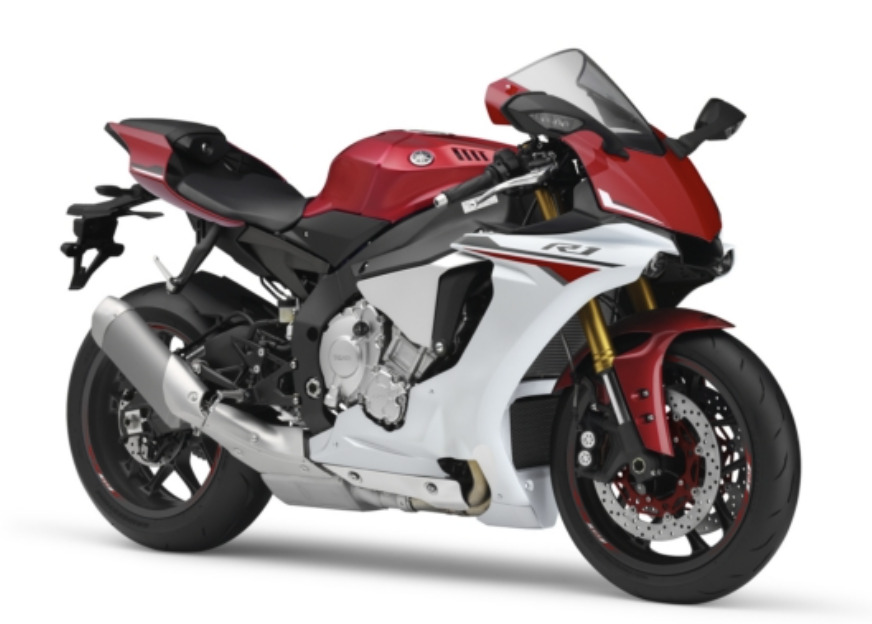Motogenn's Bike of the month - Yamaha YZF R1
Author: Motogenn Date Posted:23 November 2021
The Yamaha YZF R1 is a 1000 cc sports bike which has been made since the late 90s.

In 1998 Yamaha launched the YZF-R1 after redesigning the engine to create a more compact engine. The 'stacked gearbox' was also done by other bike brands.
Compacting the engine allowed the wheelbase to be shortened which meant the center of gravity was optimised.The dash was electrical with a self diagnosis system and digital speed display. The exhaust system used Yamaha's Exhaust Ultimate Power Valve Exhaust Ultimate Power Valve (EXUP), which controlled the exhaust gas flow to maximize engine power production at all revs. This created a high powered and high torque engine. The Yamaha YZF-R6 was introduced in 1999 as the 600 cc version of the R1 super bike.
In 2000, Yamaha made a series of changes and updates to improve the bike, as well as minor changes to the bodywork to allow for better long duration rides. Yamaha's main design goal was to improve the pre-existing bike rather than redesign it.
2002 saw the introduction of a new feul injection sysntem however, the rest of the engine remained mostly the same. A few improvements did reduce oil consumption. Also in 2002, Yamaha redeveloped the frame, improving it's rigidity by 30%. The cooling and exhaust system was also redesigned for better performance.
During 2004-2005 Yamaha made some significant changes to the model. This included style updates, like an under seat twin exhaust, and performance upgrades including radial brakes, and for the first time an R1 Ram-air-intake. The tendancy for wheelies was reduced but changing the frame shape and weight. The brake calipers were replaced by radically mounted calipers a steering damper was added and these updated with the changes to the frame helped reduce vibration in the handlebars.
In 2006 the swingarm was extended and Yamaha also released a limited edition version in original Yamaha racing colors to celebrate its 50th anniversary.
An all-new YZF-R1 for the 2007 model year was announced at the end of 2006. It had an all-new inline four-cylinder engine. It also had the Yamaha Chip Control Intake (YCC-I) electronic variable-length intake funnel system, Yamaha Chip Control Throttle (YCC-T) fly-by-wire throttle system, slipper-type-clutch, all-new aluminum Deltabox frame and swingarm, six-piston radial-mount front brake calipers with 310 mm discs, a wider radiator, and M1 styling on the new large ram-air ports in the front fairing. There were no major changes for 2008.
In late 2008, Yamaha announced an all new R1 for 2009. The new R1 takes engine technology from the M1 MotoGP bike.Yamaha claims the bike would give the rider 'two engines in one', the low end torque of a twin and the pace of an inline four. As with previous incarnations of the R1, the 2009 model keeps its Yamaha Chip Controlled Throttle (YCC-T).
Another advancement included on the 2009 model was D-Mode Throttle Control Valve Mapping, which allows a rider to choose between three distinct maps depending on the rider's environment.
At the centennial EICMA motorcycle show, Yamaha officially unveiled a new generation of R1. It is similar to MotoGP's 2005–Present YZR M1. Yamaha claims a wet weight of 199 kg. The new bike has an electronics package that includes a sophisticated Traction Control (TCS) and Slide Control System (SCS), antiwheelie Lift Control System (LIF), linked antilock brakes, Launch Control System (LCS), Quick Shift System (QSS), and selectable power modes. The Slide Control System on the Yamaha YZF-R1 is the first on a production motorcycle.
